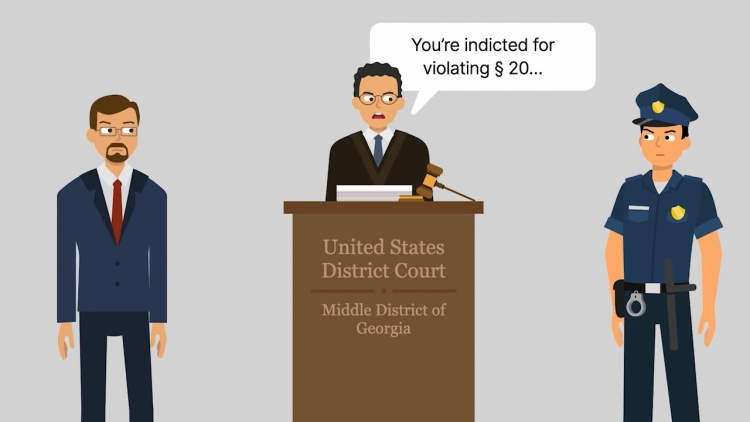Screws v. United States
United States Supreme Court
325 U.S. 91 (1945)
- Written by Walter Machniki, JD
Facts
Screws (defendant) and two other police officers in Georgia arrested Hall, a young African-American, for theft of tires. The police officers took Hall to the county court house and began to beat him with their fists and with an iron bar. Screws claimed that Hall was trying to pull a gun on them, but evidence demonstrated that the officers beat Hall for at least fifteen minutes after he was handcuffed. Hall died from the incident. Screws was charged under a federal statute prohibiting willfully depriving an individual of his rights under the due process clause of the Constitution based on the individual’s race, and of conspiracy to commit the same crime. The trial judge instructed the jury to find Screws guilty of the crime if he willfully deprived Hall of his right to a trial by jury as guaranteed by the Fourteenth Amendment. The judge instructed the jury that Hall was guilty if they believed he wrongfully assaulted Hall and intended his injuries. Screws was convicted of both the crime and conspiracy to commit the same crime. The circuit court of appeals affirmed his conviction. The United States Supreme Court granted certiorari.
Rule of Law
Issue
Holding and Reasoning (Douglas, J)
Concurrence (Rutledge, J.)
Dissent (Murphy, J.)
Dissent (Roberts, J.)
What to do next…
Here's why 899,000 law students have relied on our case briefs:
- Written by law professors and practitioners, not other law students. 47,000 briefs, keyed to 994 casebooks. Top-notch customer support.
- The right amount of information, includes the facts, issues, rule of law, holding and reasoning, and any concurrences and dissents.
- Access in your classes, works on your mobile and tablet. Massive library of related video lessons and high quality multiple-choice questions.
- Easy to use, uniform format for every case brief. Written in plain English, not in legalese. Our briefs summarize and simplify; they don’t just repeat the court’s language.





